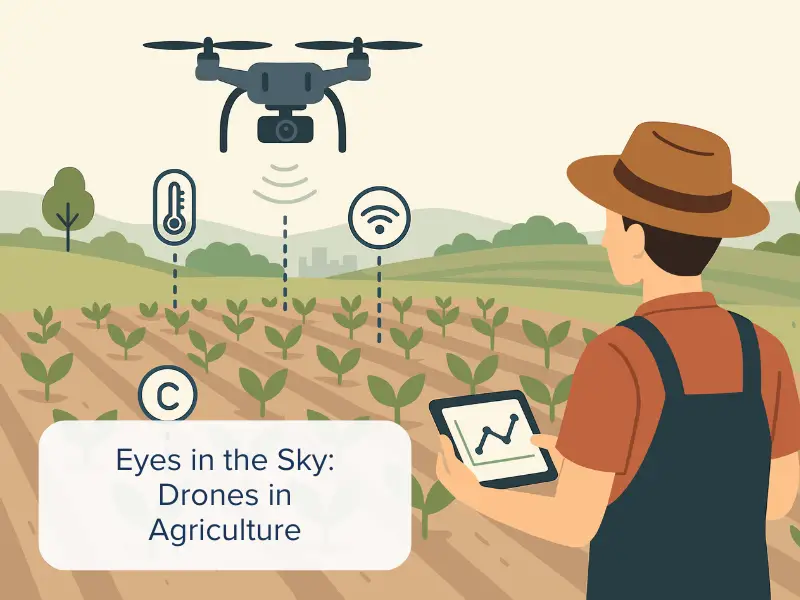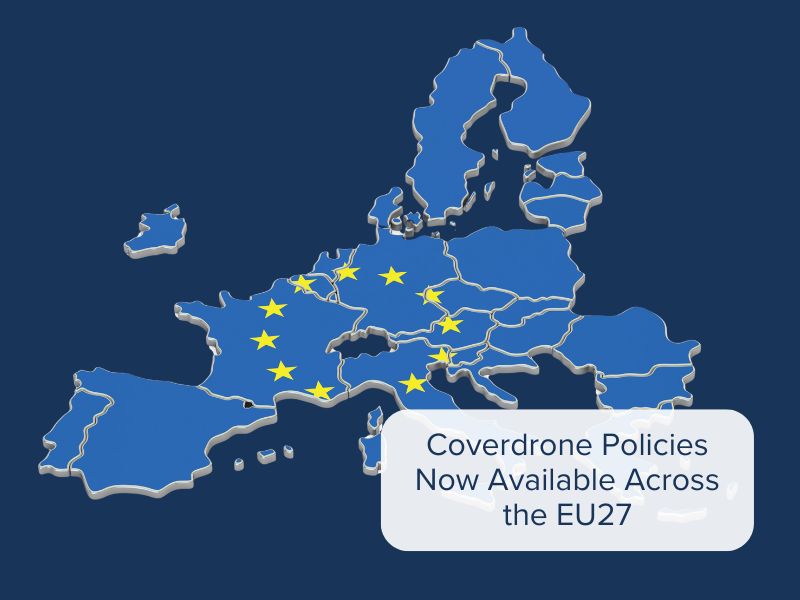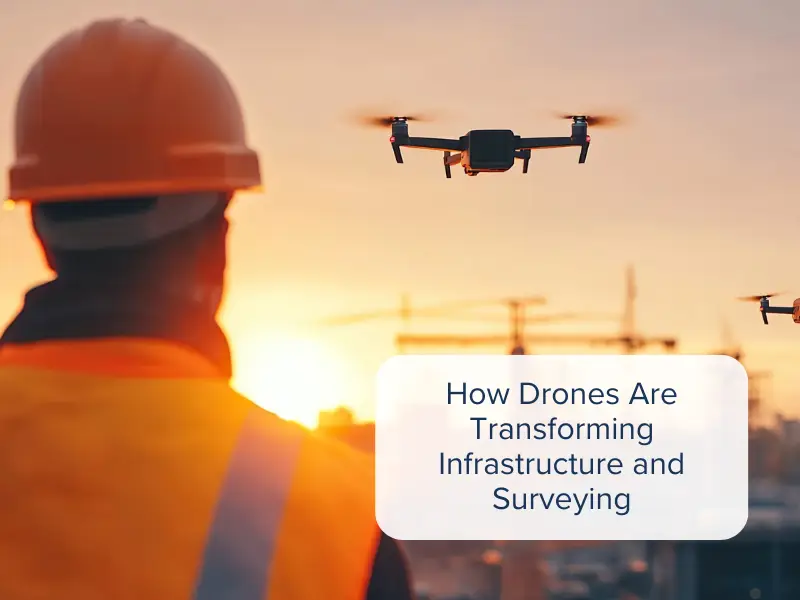Spend any time around a working farm and you’ll see how normal drones have become.
They’re up over cereal fields checking growth, flying hedge lines to monitor wildlife habitats, and keeping an eye on stock from the yard. For many operators, they’re now as essential as the quad bike or the sprayer – a tool that saves hours and helps make better decisions on the ground and in it. But like any piece of kit that earns its keep, flying commercially means taking responsibility.
Commercial drone insurance for farming and agriculture isn’t just good practice — it’s a legal requirement that protects the operator, the equipment, and everyone working nearby.
Smarter Crop Monitoring and Land Management
Understanding how a crop is performing used to rely on experience, routine field walks, and a bit of instinct. Now, a single drone flight can map hundreds of hectares, identifying areas of stress, drought, or disease long before they’re visible from the ground.
Multispectral and thermal sensors translate raw imagery into actionable data, showing variations in soil health, nutrient uptake, and canopy density. That means better-informed decisions about irrigation, fertiliser use, and harvesting schedules. For mixed-use sites, drones also support mapping, drainage planning, and even boundary management.
The technology doesn’t replace the farmer’s knowledge — it strengthens it.
Livestock and Rural Infrastructure Inspections
Rural operations often mean managing assets spread over large or hard-to-access areas. Drones make those daily checks simpler and safer.
Operators can use aerial footage to:
- Locate and count livestock across wide pastures
- Check fencing, gates, and irrigation systems
- Inspect farm buildings, grain silos, and solar installations
- Assess flood risk or storm damage after severe weather
Specialist indoor or confined-space drones can even be used to inspect barns, silos, or machinery sheds without the need for manual entry — reducing downtime and risk.
Each of these applications saves time, lowers costs, and minimises exposure to hazards. It’s efficiency grounded in practicality.
Expanding Use Cases for Drones Across the Farm
Drones are also proving their worth in livestock health and environmental management – two areas where accuracy and timing make all the difference.
Livestock Health Monitoring
- Thermal and optical sensors can identify livestock in distress, particularly in dense cover or during calving season.
- Regular flights help farmers monitor grazing patterns, track water usage, and spot early signs of illness or heat stress.
- When paired with farm management software, this data supports proactive welfare checks and reduces losses across large or remote estates.
Environmental and Conservation Work
Drones are helping landowners and contractors meet environmental commitments more efficiently.
From soil erosion mapping and floodplain monitoring to hedge and tree surveys, aerial data provides an accurate baseline for stewardship schemes and rewilding projects.
They’re also being used for biodiversity tracking, carbon reporting, and habitat assessment, offering detailed records that satisfy regulatory and grant requirements.
Each of these applications shows how drones are moving beyond simple imaging into core environmental and sustainability roles – a sign of how far the technology has matured.
Precision Spraying and Targeted Application
Spraying drones are becoming a common sight, particularly on larger farms and contracting operations. They’re used for applying fertiliser, herbicide, or seed in areas that are awkward or unsafe for ground machinery such as steep banks, wet gateways, or small paddocks where a boom sprayer simply won’t fit.
Modern systems can adjust flow rate and droplet size automatically, working from digital field maps or NDVI data captured earlier in the season. That means inputs are placed exactly where they’re needed, reducing waste and helping farmers meet tighter environmental standards. The accuracy is impressive; a well-calibrated spraying drone can treat a field to within a few centimetres of its boundary, saving both time and chemical use.
Because spraying involves payloads and powered dispersal, it falls under stricter aviation and agricultural regulations in most countries. Commercial insurance for spraying operations isn’t optional; it’s part of responsible risk management. Cargo liability, chemical liability, and flight risk all need to be covered to protect the operator, the equipment, and the people working nearby.
Used correctly, spraying drones don’t replace ground machinery – they complement it. They give farmers a safer, more efficient way to tackle problem areas, extend workable days in wet conditions, and respond quickly to pest or nutrient issues without compacting the soil.
Sustainability and Precision Agriculture
Environmental sustainability is no longer a side goal. It’s a key performance measure for most agricultural businesses. Drones have become a quiet force behind that change.
By enabling precision agriculture, operators can apply water, fertiliser, or pesticide only where it’s needed, reducing chemical use and limiting run-off into local ecosystems. Accurate aerial mapping also supports soil preservation, biodiversity monitoring, and carbon reporting, areas where reliable data is becoming increasingly valuable.
These efficiencies don’t just improve margins; they demonstrate measurable environmental stewardship to customers, regulators, and supply partners.
Commercial Drone Insurance: A Legal and Operational Requirement
Agricultural drone use falls under the same aviation regulations as any other commercial operation, and in most countries, commercial drone insurance is a legal requirement.
From equipment damage to third-party liability, the risks are real, particularly when flying near livestock, buildings, or members of the public. Coverdrone provides policies that meet those legal obligations and reflect how rural operators actually work, including:
- Public/Aviation liability for damage or injury during flight
- Equipment protection for drones, sensors, and accessories
- Cover for hired or leased payloads
- Worldwide and multi-site use, for contractors operating across regions
The right policy allows farmers, land managers, and agri-tech contractors to stay compliant while protecting their livelihood. It’s as much a business essential as any piece of machinery in the yard.
Data You Can Depend On, Drone Protection You Can Trust
Drones are giving agriculture a new perspective, not as a gimmick, but as a proven and reliable tool that supports modern farming.
From improving yields to reducing waste, they’re helping to balance productivity with environmental care. And with comprehensive insurance behind every flight, operators can focus on delivering results with confidence.




